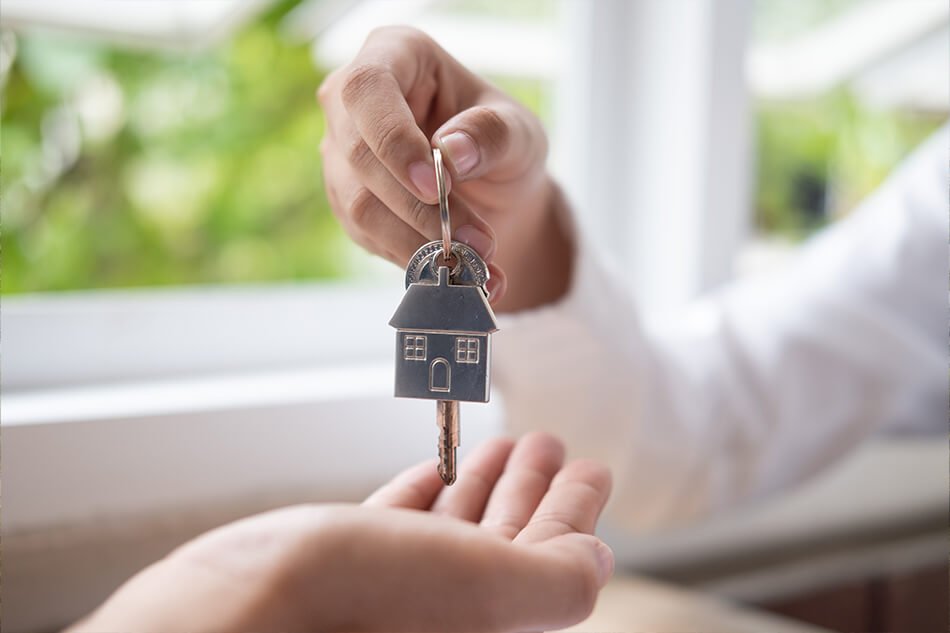Housing affordability has been a long-standing issue in Australia. Traditionally, a cyclical problem, housing affordability is regularly being debated. Now, with the majority of Aussies living in just five cities and off the scale demand for housing, housing affordability takes the centre of the stage once more.
From October 2020 to October 2021, house prices shot up 25.22% in Sydney alone. This impressive rise in property prices is the biggest boom in house prices since the 1980s. This article will unpack what housing affordability is and how it impacts Australia’s economy. We’ll answer your questions such as:
- Where is the property market now?
- What drives low affordability?
- What is the risk of a financial crisis?
- What can be done about it?
What Is Housing Affordability?
Firstly, let’s start with the basics: what is housing affordability? Essentially, we can define housing affordability as the difference between house expenditure and household income. The former refers to everything the household must payout relating to their home, including mortgage payments, rent, water bills, and upkeep.
As property prices and rental costs increase at a disproportionate rate to income, housing affordability decreases. Australia’s house price to income ratio is currently at 108.6%, and higher in the capital cities.
Housing affordability is separate from “affordable housing”, which means low-income or social housing.
How Is Housing Affordability Measured?
There is no single way to measure housing affordability. With many factors to consider, such as a household’s financial situation, housing demand and the tenure type, it can be hard to make blanket statements about housing affordability. The most straightforward measure is to compare the relationship between housing costs and income.
Housing affordability can be expressed as a ratio, for example, the 30/40 rule, implying that those with the lowest 40% of income spend more than 30% of their gross household income on housing expenses. These include mortgage or rent payments, plus other rates, such as council or water.
What Is the Housing Affordability Crisis in Australia?
Now, there is talk of Australia’s housing affordability crisis. As mentioned above, house prices are at a record high. As of May 2021, the average weekly earnings had increased by 1.4% year on year, an income increase clearly disproportionate to the more than 20% rise in house prices. We saw the most considerable growth in March 2021 and, while the pace has slowed, prices are still on the rise.
Predominantly, house prices have seen a higher rate of growth than units. The increase has been driven by various factors, including low mortgage rates, incentives to buy, a tight job market, and a desire to own more home space due to working from home during the pandemic. Plus, as construction has slowed because of Covid-19 restrictions, supply is struggling to meet demand.
The problem is one that primarily affects first-time buyers. Those with established investment properties or owner-occupiers benefit from the low-interest rates and reliance on renting.
How Much Do We Spend on Housing?
Throughout Australia, the average house price now sits at $1,000,000. Sydney is the most expensive city, with a median house price of nearly $1,500,000, while Melbourne comes in second place at just over a million. In Sydney, units have increased to an average price of $802,475.
Similarly, Sydney’s rental market prices climbed to a high of $580 per week in September 2021.
According to the Australian Institute of Health and Welfare, in 2017-18, 11.5% of low-income households spent 30% to 50% of gross income on housing costs, up from 9.2% in 1994-5. Meanwhile, 5.5% of households spent more than 50% of their income on their homes.
This data is taken from those with lower incomes, to whom paying more than 30% of their gross household income on housing would cause significant financial stress. They are, furthermore, less likely to have access to the resources to fall back on should the housing market worsen. Higher-income households, who choose to spend more than 30% of their gross income, are unlikely to suffer from financial stress.
What Factors Affect Housing Affordability?
Many different factors improve and worsen housing affordability. Over time, government intervention has done little to overall improve Australian housing affordability. Housing affordability tends to fluctuate depending on interest rates, capital gains tax discount, government intervention, lack of infrastructure, and the power of property investors over renters.
On top of these more predictable factors, there are also unexpected factors that can impact housing affordability.
Interest Rates
The Reserve Bank of Australia meets on the first Tuesday of every month (except January) to set the market interest rate. Lenders and banks use this market cash rate to set their own mortgage interest rates.
If the RBA increases the rate by 0.5%, then most lenders will increase mortgage rates by the same. If interest rates plummet, as they have to record lows in the last year, mortgage interest rates will also hit a record low—the lower the interest rate, the lower the cost of borrowing money to buy houses. Therefore, more people are able to acquire the funds to pay for a house.
This might seem that lower interest rates make the cost of housing more affordable. With more people able to borrow money, surely more people can afford housing prices?
Unfortunately, no. As more people can borrow money, demand increases exponentially. However, the housing supply does not keep up with demand. After all, it takes far longer to build a new home than to lower the interest rate. As demand rises, house prices go up.
First-time buyers and young people are disproportionately affected by this as established homeowners can use the equity from other houses to afford rising house prices.
Capital Gains Tax
In 1999, the Australian government introduced a new policy that lets home owner-occupiers selling properties reduce their capital gains tax by 50% if they have owned the property for at least 12 months. Some accuse the CGT discount as partly to blame for the high housing prices.
The CGT discount mainly benefits property investors and encourages them to purchase up all the property – an issue that is particularly impactful when there is a poor housing supply. These tax breaks prevent first time buyers from getting on the property ladder.
Government Intervention
Government intervention and policy has a significant impact on housing affordability. However, lack of intervention similarly can affect housing prices. Firstly, it suits the government and powerful investment companies to keep house prices high. Therefore, while they might recognise the housing crisis, they aren’t motivated to make drastic changes to improve the financial system.
Secondly, the government that wants to lower house prices will struggle to be voted into power as it is not an attractive prospect for homeowners.
On the other hand, the policies and interventions that the government makes don’t always work. For example, to help young people achieve home-ownership, the First Home Loan Grant was introduced. Designed to enable first time buyers to get into the housing market with a $10,000 one-off payment, in theory, this should help those with low incomes afford higher prices.
While government grants help a large proportion of young Australians get onto the property ladder, in practice, this incentive drives up demand further. Poor housing supply is one of the main factors of rising house prices.
Lack of Infrastructure
It might seem counterintuitive that Australia, with such a large landmass, is struggling to supply housing. Yet, the majority of Australians live in the capital cities; nearly 70% of all Australians live in Sydney, Canberra, Darwin, Melbourne, Brisbane, Adelaide, Hobart and Perth, according to the Australian Bureau of Statistics.
Such a concentrated population drives demand up within these cities, while regional areas don’t have the infrastructure to encourage people to move away. However, as more people live in the capital cities, government funding tends to focus on these areas. It is a cyclical problem of its own making.
Without improved roads and railways connecting each individual city, affordable housing will always be out of reach.
Fear of Retribution
Renters lack power. Sydney rent prices have grown by 3.2% year on year. While this is not as dramatic a hike as house prices, the rental market is part of the problem. 47.8% of renters in capital city areas were considered to be in rental stress in 2017-18. And yet, fears of eviction or increased rent prices keep them from speaking up about poor quality housing or urgent repairs.
This power imbalance prevents renting from becoming an attractive option for a lot of Australians. Therefore, more and more people set their ambitions on buying a property. Thus, demand increases further. Without stricter policies for private landlords, the private rental market might continue to push people towards home-ownership rather than renting.
What Is the Risk of a Financial Crisis?
Every time Australian house prices rocket up, there are predictions that high debt levels will lead to property prices crashing and causing an economic crisis. However, this has yet to occur. Whenever we’ve experienced a housing bubble previously, the majority of borrowers are able to keep up with their mortgage repayments.
Plus, as interest rates are particularly low (currently at 3.02% for outstanding loans), home loan debts aren’t as detrimental to household incomes as they could be.
Yet, there is a concern that we might get too relaxed about the housing situation. If the household debt to income ratios continue to grow further apart, then it might cause an issue down the line. Although this issue may not be a financial crisis, the problem of low affordability is still an issue for low-income households.
How Do We Solve Housing Affordability?
So, what can we do about housing affordability? Luckily, some parts of the issues might be addressing themselves. Interest rates cannot lower much further, meaning that they can only go up. While they might remain stable for a period before rising, mortgages will be less attractive for property investors when they do go up.
Let’s take a look at what else we can do about housing affordability.
Make Renting a Long Term Solution
There is no one answer to fix the housing problem. However, one reform that might lower demand would be to improve the private rental market. If rental stress is driving people to buy property sooner than they would otherwise, the solution might be to implement requirements for landlords to improve conditions for tenants.
Tenants might be more likely to lengthen their leases with greater rental options (e.g. more rental properties allowing pets, better furnishings, and thorough repairs). Currently, the rental market is very much looked at as a temporary stopgap until people buy a home. Therefore, little attention or care is paid to the quality of the rental accommodation.
If the outlook were to consider rental properties as long term solutions for tenants, they might become more attractive places to live, and demand to buy would reduce.
Decentralisation
We mentioned that the lack of infrastructure is a driver of house prices earlier. Undoubtedly, one possible answer would be to fund opportunities, transport and housing construction in regional areas. Decentralising Australia makes sense. By creating more attractive spaces to live in outside of the capital cities, we’ll make better use of our landscape.
Therefore, supply might meet demand and, as a result, house prices would begin to decline. As we have seen with the rise of the work from home practice, living centrally is no longer as significant a priority as it used to be. Now we can all have our home offices, perhaps Australians won’t need as much incentive to move away from the central areas.
Construction
In addition to decentralisation, relaxing rules around construction and offering incentives to build more properties would also help improve supply.
On the one hand, the last two years saw a considerable decline in foreign investment. Therefore, demand has begun to lessen as immigration levels dropped off. With our borders shut for almost two years, Australians have had a chance to grab the property supply themselves. However, as the borders reopen, there are no guarantees that demand will shoot up again as immigration returns.
In Summary
Housing affordability isn’t an issue that will go away overnight. With many different factors and many potential answers, there is no one answer to help those with lower income get onto the property ladder.
To help combat rocketing house prices, you might want to get your next home loan with the help of a mortgage broker. At Lendstreet, we’ll find a tailored solution to ensure buying your next property is easy.
Housing prices fluctuate over time, and affordability ranges from poor to good. Demand might be at an all-time high right now, but there is no reason that supply will not pick up soon, and the house price-to-income ratio will even out.
Get the latest news and updates from Lendstreet
Join and subscribe to our newsletter.
FAQs
How Does Housing Affordability Impact the Economy?
Poor housing affordability has the potential to widen the household debt to income ratio. If fewer people can afford their home loan repayments, then there is the possibility of creating economic problems. If lenders impose stricter requirements, it is less likely that borrowers will default on their payments, and the Australian economy should not be significantly impacted.
How Does Housing Affordability Affect People?
Housing affordability affects people of high and low incomes disproportionately. As houses rise in value, homeowners hold all the power. They can sell their property at a profit to increase demand. This is known as a seller’s market. On the other hand, those on lower incomes or first-time buyers struggle to purchase property as prices rocket.
Plus, poor housing affordability can affect renters. As more people require rental properties as they cannot buy, rental prices go up while quality decreases.
Access to affordable housing is crucial for people’s well-being. It has proven to help reduce poverty and improve equality.
What Are the Causes of Australian Housing Affordability?
Poor housing affordability is caused by demand outweighing housing supply. Low-interest rates, capital gains tax discounts, government intervention and a lack of infrastructure beyond Australia’s capital cities are all factors that have driven up demand for housing.
Inevitably, many of these causes result in further housing issues—like poor quality rental properties—pushing housing demand even further.
How Is Housing Affordability Defined?
Housing affordability is defined as the relationship between gross household income and housing costs. These costs refer to all the expenses related to the home, including mortgage or rent payments and water rates. Demand outweighing supply leads to poor housing affordability, which disproportionately affects low-income households and first-time buyers.
Schedule a call to one of our expert mortgage broker
Ask our expert mortgage brokers anything about home loans.
Related articles
In Australia, the official cash rate and the interest rates on loans and bank accounts are two different things. ...
If you're a property investor looking to secure your next loan, you must consider all your options. Choosing between ...
Key Takeaways: A credit score is designed to predict your financial behaviour and helps a credit provider assess risks. ...









